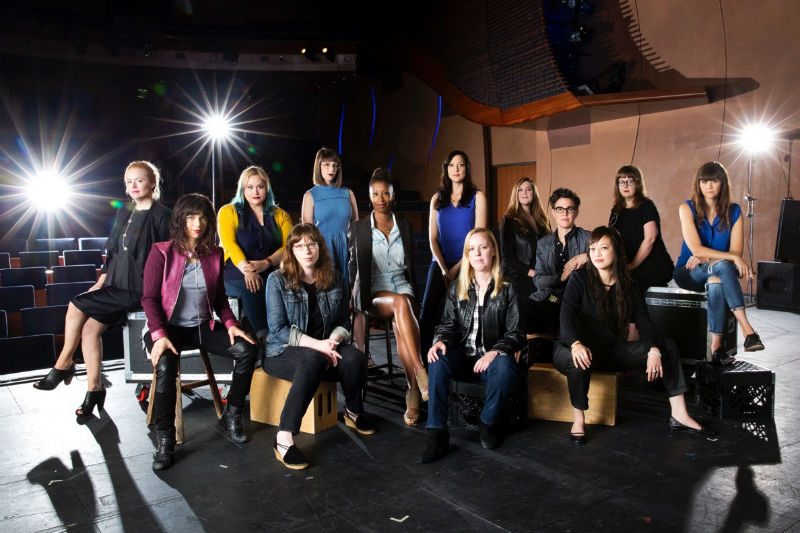Women and Trans in the spotlight; meet the s/heroes of American Theater.
In American theater, female creative talent, “actresses” aside, are in the minority. So significant is the lack of female playwrights, straight or queer, who manage to break onto the mainstages that gender parity has become a major concern.
Fighting to achieve gender parity in the theater is independent LA-based playwright/producer collective The Kilroys, which recently released its third annual list of industry-recommended new plays. Their tagline is—significantly—“We make trouble and plays.”
But so far, the trouble they’re causing is very welcome, especially by talented female and queer writers who are consistently swept to the margins in a profession that values the known over the unknown for the sake of box office receipts. The Kilroys’ List for 2016 features the most nominated unproduced plays written by female and trans* writers, following a survey of 230 professional artistic directors, literary managers, professors, producers, directors, and dramaturgs.
The List was designed to bring worthy plays by female and trans* playwrights to the forefront of the American Theater conversation. It has succeeded: In its first two years, The List has featured 99 plays, and over 1,000 plays have been nominated by upwards of 450 industry professionals.
Since then, more than 100 productions of plays on The List from both years have been mounted or announced. Playwrights had acknowledged that inclusion on The List boosts their careers. In a survey of LIST playwrights, 95% of respondents reported an increase of requests for their plays following inclusion in The List, and 80% report subsequent productions at such notable theaters as Actors Theatre of Louisville, Center Theatre Group, South Coast Rep, Atlantic Theater Company and others.
Curve caught up with queer/trans playwright MJ Kaufman for an inside look at The Kilroys and playwriting from the margins.
When did you begin to identify as a playwright?
When I was in High School and had the honor of participating in Young Playwrights Inc, a really fabulous program in which young writers get to hear their work performed by professional New York actors. We also got to take classes with some wonderful playwrights and see very exciting plays. It was a huge gift. I thought of myself as a writer ever since.
Which playwrights do you most admire?
There are so many! My teachers Paula Vogel, Sarah Ruhl, Deborah Stein, Lynn Nottage, Deb Margolin, Ken Prestininzi. Others include Adrienne Kennedy, Naomi Wallace, Suzan-Lori Parks, Cherrie Moraga, Robert O’Hara, Tony Kushner, Anne Washburn, Thornton Wilder, Jane Bowles, Djuna Barnes, Federico Garcia Lorca… I could go on and on.
How would you describe your own work?
As for my own work I’m hesitate to boil it down too much because I end up finding new forms for each story I have to tell. But it tends to be strange, funny, and unconventional.
How and why did you get involved in The Kilroys?
I heard from the Kilroys out of the blue two years ago when they wrote to say my work had been nominated. They were very thoughtful because at the time the list was intended as “plays by women,” and they knew that I might not identify as a woman. It was the first year and they said that they wanted to make the list trans inclusive in the future. I was so excited by their project, impressed by their thoughtfulness and honored to be nominated.
Female, lesbian, queer, and trans playwrights have pretty terrible chances of getting their work produced on the mainstages. Why do you think that is?
Unfortunately I think there is a lot of sexism and homophobia in our theatrical institutions. As in most fields more of the people in positions of leadership and decision-making are men and/or straight. And then of course there is the world we live in, the hundreds of years of cultural messaging that men are smarter, more capable and trustworthy; that they are experts and authorities.
Women are perceived as less smart and capable; when women express feelings they’re told they are difficult or hysterical. And all of that adds up to women—especially queer ones—having fewer role models, less access to training institutions etc. and people taking their work less seriously.
Sometimes I think work that features queer women is especially disadvantaged because it might have two women instead of a man onstage and in my experience plays without major cis-male characters are much, much harder to get produced. You know, the Bechdel test and all that.
But the theater world is missing out because people on the margins of society are the ones who read society most clearly. Women, queer and trans people notice subtleties in movement, language, attitude, and relationships that can be lost on others. And that extra awareness translates to exceptional theatrical craft.
Words of encouragement to queer playwrights on getting their work read, or produced? Any opportunities we might not have heard of?
Keep writing! Write the stories you have to tell not the ones you think will get produced. Produce your own work even on a super small scale. Do everything you can to make your own work happen rather than waiting to be chosen. Never let someone else hold the keys to your creativity. And send your work to New Georges!
When can we next see your own work performed or produced?
My play Sagittarius Ponderosa (Kilroys List 2015) will have its New York Premiere at National Asian American Theater Company in October 2016!
